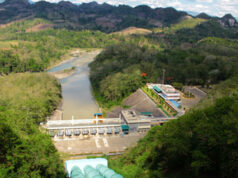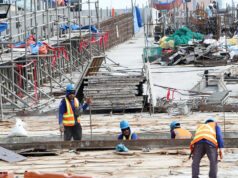THE PROPOSED $700-million Pasig-Marikina River Basin Flood Management Project for Metro Manila’s flood control system could feature a retention basin to boost its climate resilience, the World Bank said, citing preliminary design studies.
The World Bank, which will partially finance the project, said completion of the design is targeted for the end of June, along with other feasibility studies for the flood control project such as a flood forecasting and early warning system for Metro Manila and its surrounding areas, as well as the design of the institutional arrangements for sustainable flood management.
It said the retention basin with a capacity to impound about 12 million cubic meters of floodwater will “boost climate resilience” as the proposed Marikina Dam alone is deemed insufficient to rule out flooding in the event of a 100-year rainfall event.
It said the proposed Marikina Dam to be constructed across the Marikina River will be an 81-meter high concrete gravity dam with a 350-meter crest and a 90 million cubic-meter gross storage capacity.
“The primary function of the proposed dam should be flood management, which is a public good, and public resources should be used for this. The dam is designed to reduce the maximum river discharge of a 100-year rainfall event in the catchment by about 85% from an inflow of 3,460 cubic meters per second to an outflow of about 600 cubic meters per second by temporarily storing flood waters for regulated discharge after the storm event. This will require the reservoir to be almost empty during the rainy season to capture floods,” the bank said.
The proposed Pasig-Marikina River Basin Flood Management Project will be implemented by the Department of Public Works and Highways.
The World Bank will provide $400 million of the total project cost of $700 million by next year, while the $35 million will come from other sources, leaving a funding gap of $265 million.
“Although Metro Manila constantly has issues related to urban flooding, it also began to experience water scarcity since March 2019. Inadequate and intermittent water supply affects customers in many parts of Metro Manila. Delays in developing additional water sources and increasing demand for water due to population growth have contributed to the water supply crisis, which needs to be addressed along with flood reduction measures,” it said. — Beatrice M. Laforga



